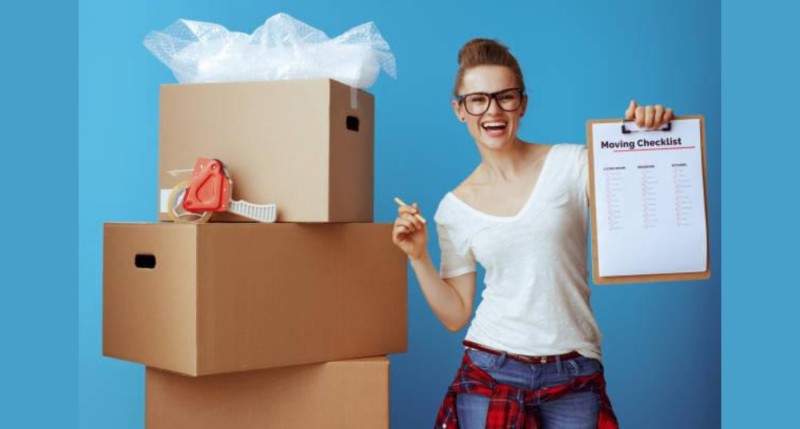The excitement of moving to a new home often collides with the overwhelming reality of packing up your entire life into boxes. Having helped countless families transition between homes over the years, I've witnessed firsthand how proper preparation can transform a chaotic experience into a manageable project. Whether you're downsizing to a cozy apartment or expanding into your dream house, these tried-and-true strategies will help you navigate the packing process with minimal stress.
Start Early, Finish Strong
The single biggest mistake people make is underestimating the time it truly takes to pack. Even small apartments contain more belongings than you might realise. Begin at least three weeks before your moving date by tackling one room at a time. Those storage spaces you rarely access—such as guest rooms, attics, and garden sheds—make excellent starting points, as they contain items you won't miss during the transition period.
Keep a journal documenting your progress. Not only does this provide emotional satisfaction as you tick off completed areas, but it also creates a record you can reference if you need to locate something specific before unpacking entirely.
The Art of Decluttering
Moving offers a rare opportunity to reassess your relationship with your possessions. Before wrapping the first plate, sort everything into four categories: keep, donate, sell, and discard. Be ruthlessly honest—if you haven't used an item in over a year, chances are you don't need it.
I've watched clients experience profound relief after parting with things they'd held onto for years. One woman told me that letting go of her unused exercise equipment felt like removing a silent judgment from her home. Another family held a pre-move "free shop" for friends and neighbours, transforming the decluttering process into a community celebration.
Quality Materials Matter
While it might be tempting to grab free boxes from supermarkets, investing in proper packing materials will save you headaches and potential heartbreak. Heavy-duty boxes in various sizes, quality packing tape, bubble wrap, packing paper, and furniture blankets are essential ingredients for a successful move.
Professional movers consistently emphasise that using the right materials prevents damage and makes unpacking dramatically easier. The small investment pays dividends in protected belongings and reduced stress.
The Box-Labelling System that Truly Works
Developing a practical labelling system is among the most valuable packing tips for move preparation. Create a simple colour-coding scheme for different rooms, using colored tape or stickers. Then, number each box and maintain a spreadsheet or notebook detailing the contents of each numbered container.
This approach transforms the unpacking process from chaotic guesswork into an organised endeavour. Need your coffee maker immediately? A quick glance at your inventory will tell you exactly which box to open first.
Packing Room by Room
For kitchens, wrap fragile items individually and use smaller boxes to prevent them from becoming too heavy. Plates should be packed vertically rather than stacked, as this reduces pressure points.
In bedrooms, vacuum-sealed bags work wonders for bulky linens and off-season clothes. Leave clothes on hangers and group them together with garbage bags slipped over the bottom, creating instant portable wardrobes.
Living rooms often contain electronics with complex setups. Take photos of cable configurations before disconnecting anything, and tape cords to the devices they belong to.
The Essentials Box: Your First-Night Lifesaver
Create a clearly marked "essentials" box containing everything you'll need for your first 24 hours: toiletries, medications, phone chargers, basic tools, snacks, pet supplies, and a change of clothes. This prevents the frustration of searching through dozens of boxes for necessities when you're already exhausted from moving.
Timing the Final Push
The week before moving requires careful planning and organisation. Plan meals around emptying your refrigerator and pantry. Pack a suitcase as if you're going on a short trip, keeping out only what you'll need until moving day.
On the final day, strip beds and pack linens last so they can be easily located and used first at your new home. A thorough cleaning of your empty old place provides both practical closure and emotional transition.
The Professional Advantage
While these strategies significantly improve self-managed moves, partnering with experienced professionals like Butler's Removals & Storage often proves invaluable. Their teams bring not only muscle but expertise in handling awkward items and navigating tight spaces. Many clients report that the peace of mind from professional assistance justifies the cost, particularly for long-distance relocations.
The Move Isn't Over Until You're Settled
A thoughtful unpacking strategy extends the benefits of your careful packing work. Prioritise setting up bedrooms and bathrooms first to establish functional living spaces immediately. When tackling the kitchen, arrange the essentials: coffee maker, toaster, and everyday dishes, before organising less frequently used items. This approach creates functional spaces quickly, reducing the psychological burden of being surrounded by boxes.
Allow yourself to unpack gradually, focusing on creating livable spaces rather than striving for instant perfection. Many households find that unpacking over two weekends with breaks in between leads to more thoughtful organisation than attempting to complete everything in a single exhausting push.
Conclusion
Moving homes represents not just a physical transition but an emotional journey. By approaching the process methodically and with proper preparation, you transform a potentially overwhelming experience into a manageable project. And remember, if you're feeling overwhelmed by the scope of your move or need additional storage options for Cairns clients, reaching out to specialists can provide the support you need during this significant life transition.
